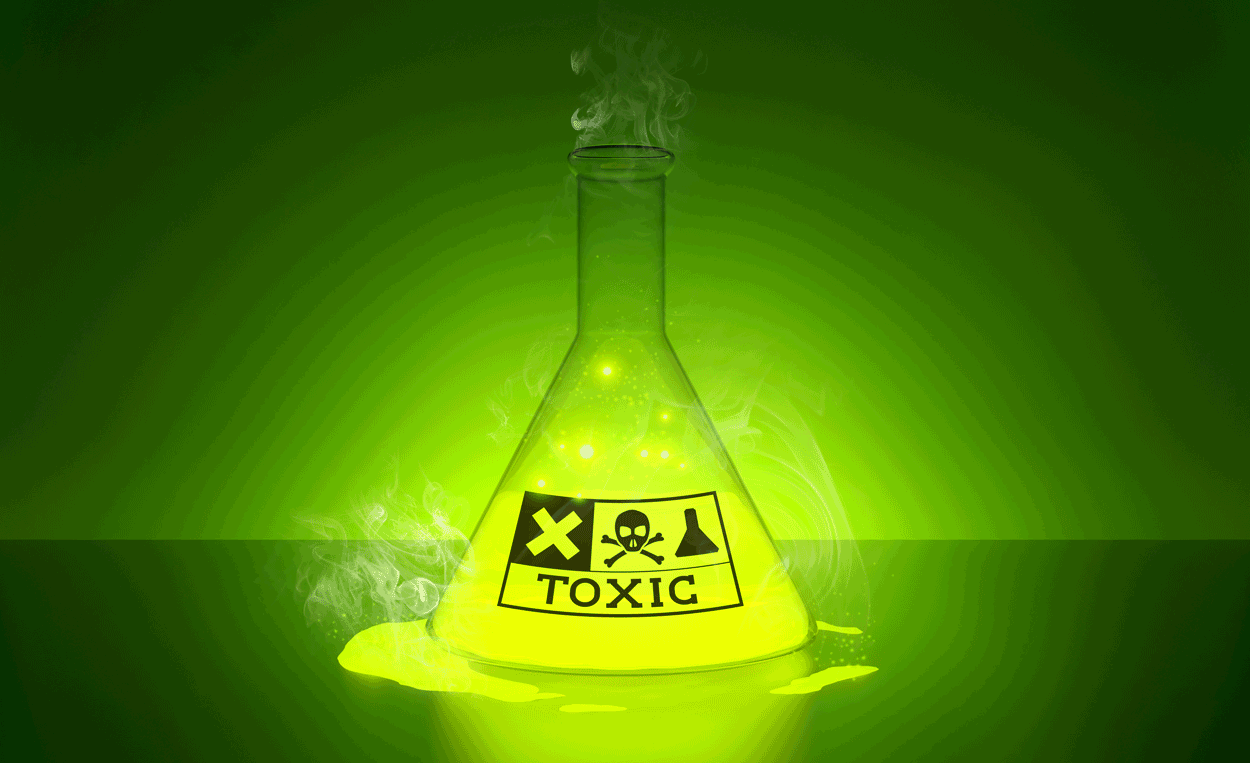Although the federal Occupational Safety and Health Administration (OSHA) only recommends that employers create comprehensive safety and health programs, California and a handful of other states require employers to do so. (I wrote about OSHA’s latest recommendations HERE). The remainder of this note summarizes California’s Injury and Illness Prevention Program (IIPP) requirements, which are administered by the state’s Division of Occupational Safety and Health (DOSH; known universally as Cal/OSHA).
Read MoreAudit, Compliance and Risk Blog
California Injury and Illness Prevention Program requirements
Posted by Jon Elliott on Mon, Mar 14, 2022
Tags: Health & Safety, OSHA, Safety and Health at Work, workplace safety, California, Healthcare
According to the Occupational Safety and Health Administration (OSHA), half a million Americans work in “laboratories.” For more than 30 years, OSHA has administered its “Occupational exposure to hazardous chemicals in laboratories” standard – usually just called the Laboratory Standard – to protect employees “engaged in the laboratory use of hazardous chemicals” (29 CFR 1910.1450). The rest of this note discusses these requirements.
Read More
Tags: Health & Safety, OSHA, Hazard Communication
After more than 50 years, OSHA proposes newer and more flexible standards for forklifts
Posted by Jon Elliott on Mon, Feb 28, 2022
The Occupational Safety and Health Administration (OSHA) has proposed revisions to its Powered Industrial Trucks Standard – more often referred to as the “Forklift Standard” since those are the most common types (29 CFR section 1910.178 (general industry) and 1926.602 (construction)). OSHA first adopted the standard in 1971, and most recently revised it in 2017. However, as discussed below, OSHA has never updated the Standard’s principal technical standards during more than half a century. The remainder of this note summarizes the existing requirements, and identifies proposed revisions.
Read More
Tags: Health & Safety, OSHA
Latest National Toxicology Program Report on Carcinogens adds 8 substances
Posted by Jon Elliott on Mon, Feb 14, 2022
The US National Toxicology Program (NTP) has issued its 15th Report on Carcinogens (RoC), adding eight new substances; NTP now identifies 256 chemical, physical, and biological agents; mixtures; and exposure circumstances as “known or reasonably anticipated to cause cancer in humans.” NTP operates within the National Institute of Environmental Health Sciences (NIEHS), which is a unit of the National Institutes of Health (NIH). It was established in 1978 to:
Read More
Tags: Health & Safety, NTP, toxicology
California continues temporary requirements for COVID vaccination and testing
Posted by Jon Elliott on Mon, Feb 07, 2022
Although the Occupational Safety and Health Administration (OSHA) has been forced by court action to convert its would-be “emergency temporary standard (ETS)” under which large employers would have been required to protect unvaccinated employees from COVID-19 infections into a proposal (I wrote about the initial ETS HERE), some states can and are moving ahead with similar requirements. Notably, California’s Division of Occupational Safety and Health (DOSH, but universally called Cal/OSHA) recently revised and renewed its own COVID-19 ETSs. The remainder of this note summarizes these standards, which cover five sections of Title 8 of the California Code of Regulations (CCR):
Read MoreTags: Health & Safety, OSHA, Safety and Health at Work, Covid-19, workplace safety, California, Vaccination, Healthcare
The US federal Occupational Safety and Health Administration (OSHA) administers “Voluntary Protection Programs” (VPPs) to encourage employers to establish and implement voluntary worker Safety and Health Programs that exceed minimal efforts to comply with applicable OSHA standards. As its name states, participation in any VPP is voluntary. They are designed to encourage employer/employee/OSHA cooperation, and to reward such cooperation by granting employers increased flexibility and reduced likelihood of inspection. VPP sets performance-based criteria for a managed safety and health system, invites sites (and discrete mobile workforces) to apply, and then assesses applicants against these criteria. OSHA provides for full participation (the “Star” program) for sites/workforces that meet all criteria, conditional participation where an employer claims to meet some VPP criteria by non-standard methods (the “Demonstration” program), and qualified participation where the employer fully meets some VPP criteria and has definite plans to meet others (the “Merit” program).
The remainder of this note summarizes VPP criteria and provides additional information about the status of the programs.
Read More
Tags: Health & Safety, OSHA, Safety and Health at Work, workplace safety, VPP
The US federal Occupational Safety and Health Administration (OSHA) has added a portal to its webpage compiling “Holiday Worker Safety” guidance. These cover obvious retail and delivery workplaces that are likely to be especially busy during the holidays, as well as links to generalized resources and guidance intended to be useful to all workplaces. The remainder of this note identifies and summarizes OSHA’s pointers.
Read More
Tags: Health & Safety, OSHA, Safety and Health at Work, workplace safety
OSHA emergency temporary standard for COVID vaccination and testing – issued but stayed by litigation
Posted by Jon Elliott on Tue, Nov 23, 2021
On November 5, the Occupational Safety and Health Administration (OSHA) published an “emergency temporary standard (ETS)” specifying steps that employers with 100 or more employees must take “to protect unvaccinated employees” from COVID-19 infections in their workplaces. The ETS requires targeted employers to comply with most provisions by December 6, and with requirements for testing of unvaccinated employees by January 4, 2022; it remains in place for 6 months.
However, at least a dozen major lawsuits have been filed against the rules, the effectiveness of which are stayed as of this writing by an order issued by a panel of judges in the Fifth Circuit Court of Appeals. On November 16, the Judicial Panel on Multidistrict Litigation resolved the overlaps by assigning the Sixth Circuit (based in Ohio) to hear the consolidated cases. Depending on the outcome of the litigation, the ETS may or may not ever become effective … but it does illuminate OSHA’s thinking about appropriate employer responses to the ongoing COVID pandemic.
The remainder of this note describes OSHA’s ETS requirements, and the scope of the special authority OSHA is using to adopt it.
Read MoreTags: Health & Safety, OSHA, Safety and Health at Work, Covid-19, workplace safety, Vaccination, Healthcare
OSHA narrows procedural protections for employees exercising their rights
Posted by Jon Elliott on Wed, Sep 22, 2021
The Occupational Safety and Health Act of 1970 provides the national framework for worker protections and empowers the Occupational Safety and Health Administration (OSHA) to create and enforce worker protection standards. The OSH Act authorizes states to apply to OSHA for delegation of this authority (referred to as “state plan states”). In addition to these agency actions, however, the OSH Act also empowers the workers themselves to stand up for these rights, and to complain to agencies when they believe their rights are being violated. Beginning in 1973, OSHA has promulgated regulations formalizing employee rights to be free of adverse actions by their employers – “discrimination” in the language of the law and regulations – for exercising their rights to self-protection (codified in 29 Code of Federal Regulations (CFR) part 1977). Effective September 3, 2021, OSHA has updated these part 1977 regulations to track US Supreme Court decisions that tend to narrow employee rights somewhat. The remainder of this note summarizes OSHA’s part 1977 regulations and discusses the latest revisions.
Read More
Tags: Health & Safety, OSHA, Safety and Health at Work, workplace safety, anti-retaliation
OSHA recommends masks for fully vaccinated workers in high COVID-19 transmission areas
Posted by Jon Elliott on Tue, Aug 24, 2021
As the COVID-19 pandemic has progressed, public health and worker safety agencies have issued and re-issued directions to employers. On August 13, 2021, the Occupational Safety and Health Administration (OSHA) revised its benchmark guidance for workplace COVID-19 risk management. The remainder of this note summarizes OSHA’s newly-revised “Protecting Workers: Guidance on Mitigating and Preventing the Spread of COVID-19 in the Workplace.” (I wrote about the initial January 2021 version HERE and the June 2021 revisions HERE). This revision responds to “breakthrough” infections among vaccinated people by incorporating the latest the Centers for Disease Prevention and Control (CDC) recommendations for masking of employees who are fully vaccinated but work in “areas of substantial or high community transmission” – which as of this writing covers nearly 95% of US counties.
The remainder of this note summarizes the guidance (including unchanged elements) and then highlights the new masking guidance.
Tags: Health & Safety, OSHA, Safety and Health at Work, Covid-19, workplace safety, Vaccination, Healthcare










